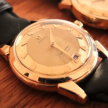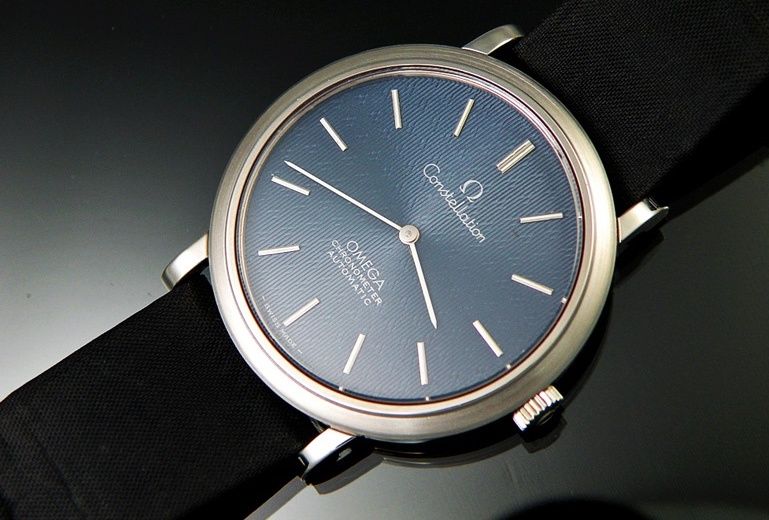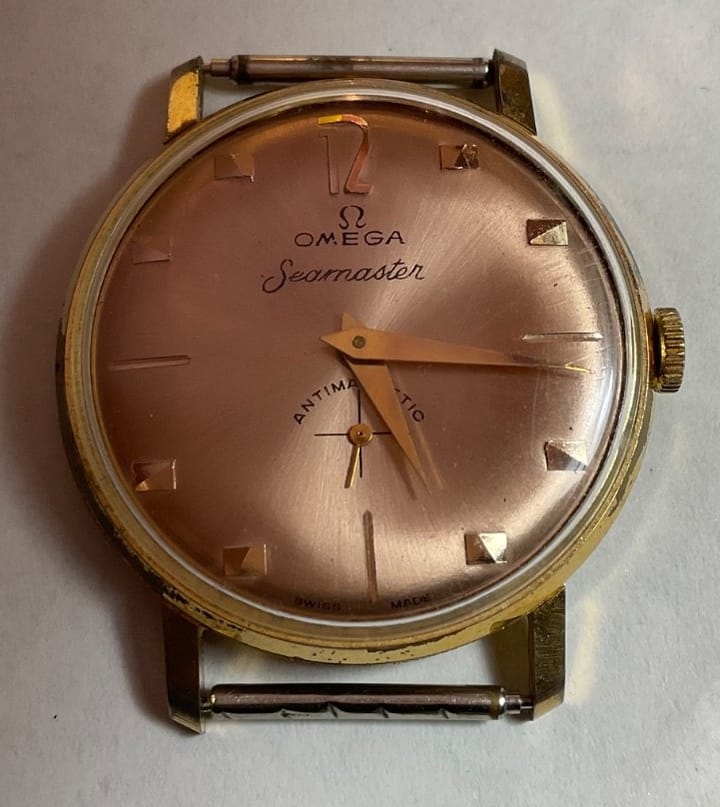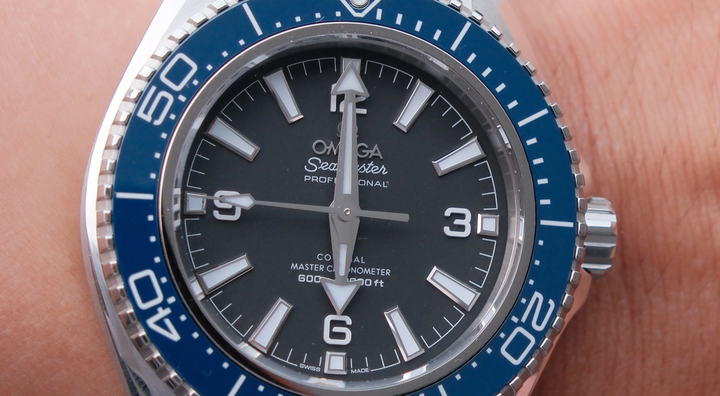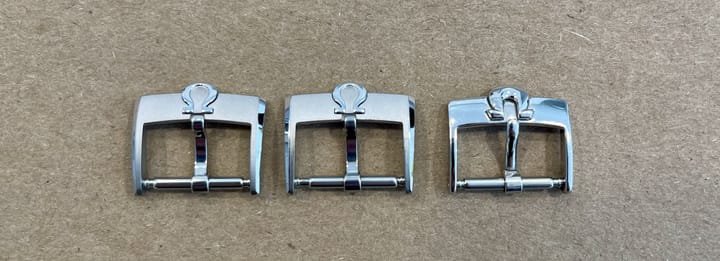Combining vintage 30mm Chronometer styling, Omega's best ultra-thin movement, and a high tech case design featuring one of their earliest sapphire crystals, the 157.0001 is a shining star of the Constellation range, which still gets far less attention than it deserves.
Don't Call It A Calatrava Because It Isn't
The Constellation ultra-thin 157.0001 is a beautiful, elegant, and timelessly designed dress watch, with a very different look and feel from any prior Constellation model. It's a watch that looks very modern despite being half a century old and has performance specifications that hold up very well even today.

These Constellations have been sold across the world, but a very large portion of the total production, along with some special dial variants and the Tenshodo 100th Jubilee Edition are found in Japan. A lot of the features of this reference, the non-luminous dial and hands, simple design, and unusual case are common among Japan special Omega models so it is no surprise to see them sell well in the land of the rising sun.
The design of this Constellation does bear striking similarity to some Patek Philippe Calatrava models like the 5119 due to the shape feeling rather unfamiliar to Omega collectors but there have been 1950's and earlier Omegas with similar lugs and overall designs in the 30mm Chronometer family.

While the 1970's was a period of experimentation that saw a shift downmarket by Omega, this watch bucked that trend as a premium product with one of Omega's best movements, precious metals, and a high degree of finishing quality.
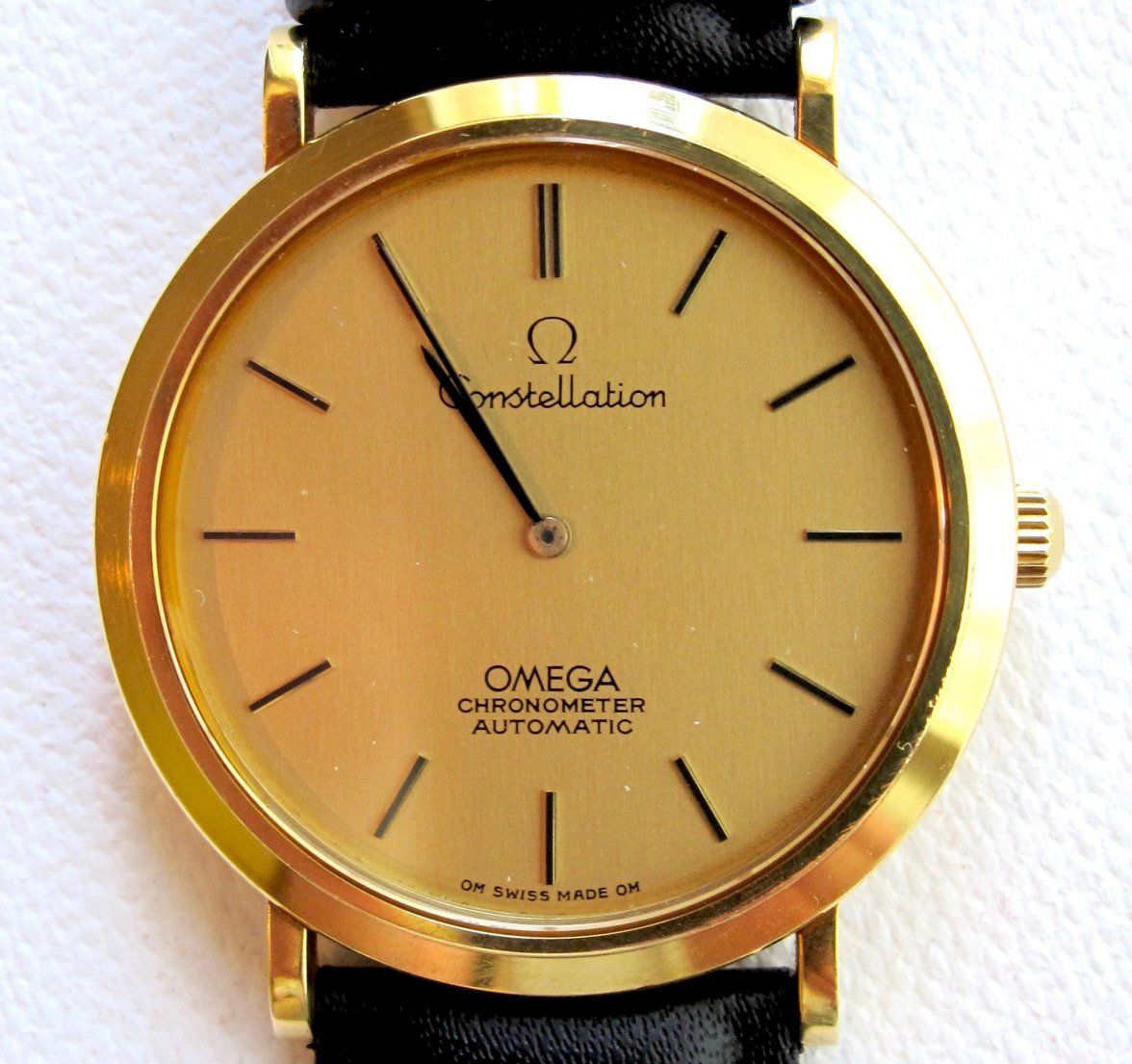
Tenshodo Japan
Tenshodo is a very interesting company in Japan founded during the Meiji era. The brand rose to international fame in the post-war years as one of the best manufacturers of brass HO model trains in the world, building a reputation for quality selling to US servicemen in Japan before beginning to export around the world.
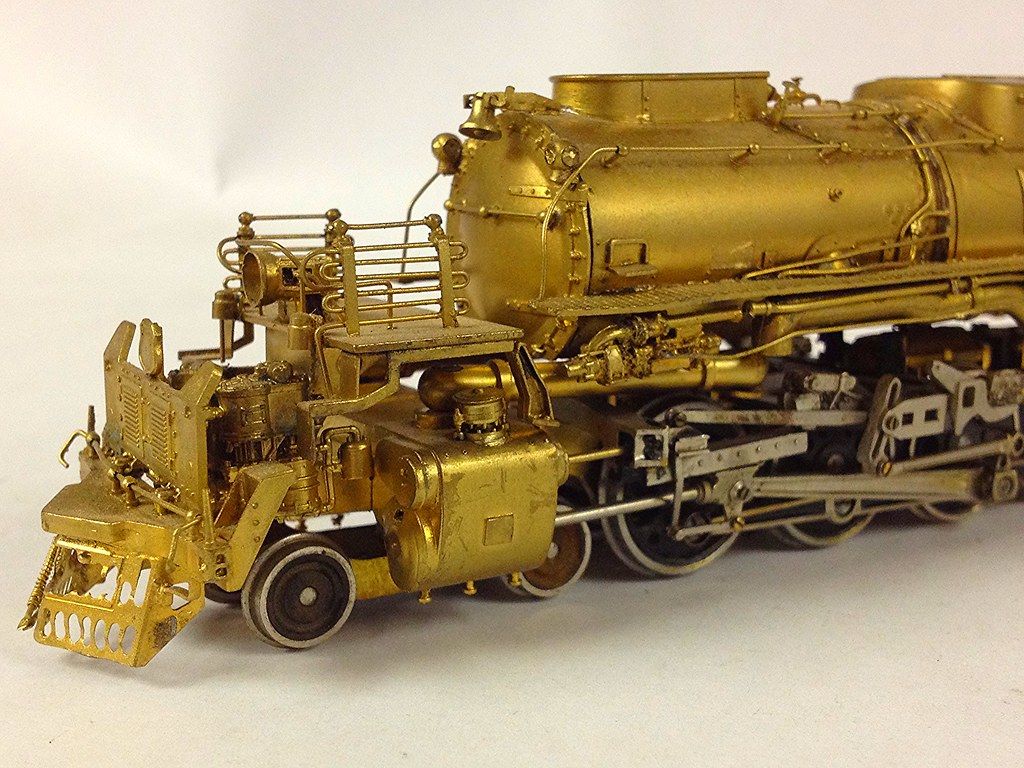
Even here in Australia, my father, a model railroad enthusiast in the 60's, 70's & 80's was a fan of their work and the intricate detail Tenshodo put into their models. Tenshodo's brass HO model of Union Pacific's 4-8-8-4 "Big Boy" was one of the most sought after, an incredibly detailed hand-made model produced in the 1950's.

Long before the model train business took off, Tenshodo began in a very different way by securing the rights to import and distribute a number of different Swiss watch brands which they continued to sell over their history. One of the best sellers of the post-war era was Omega.
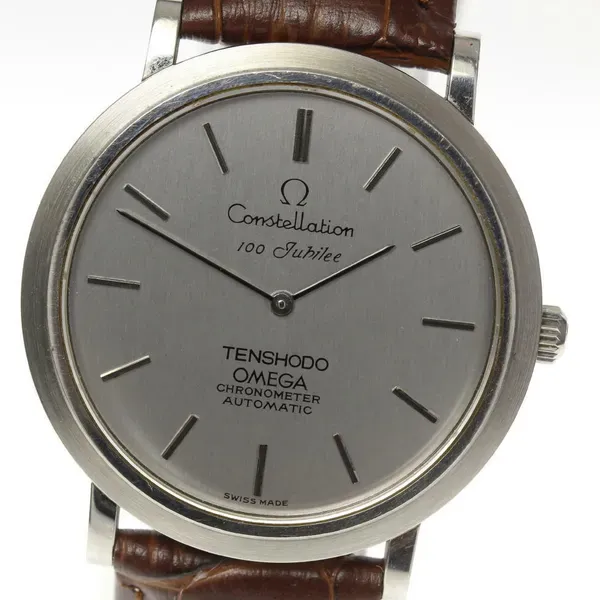
Thus the Tenshodo 100th Jubilee Edition celebrates the company's roots as a Swiss watch importer. The Tenshodo brand still exists and recently celebrated their 120th anniversary although the brass hand-made train business has slowed down quite a bit in recent years.
Case & Bracelet
The case of the Constellation 157.0001 is particularly enigmatic in that from the front it appears extremely simple, almost a single piece of metal. Then when looking from side-on you can clearly see how many layers, pieces, cut-outs and complex shapes have gone into the construction of this watch.
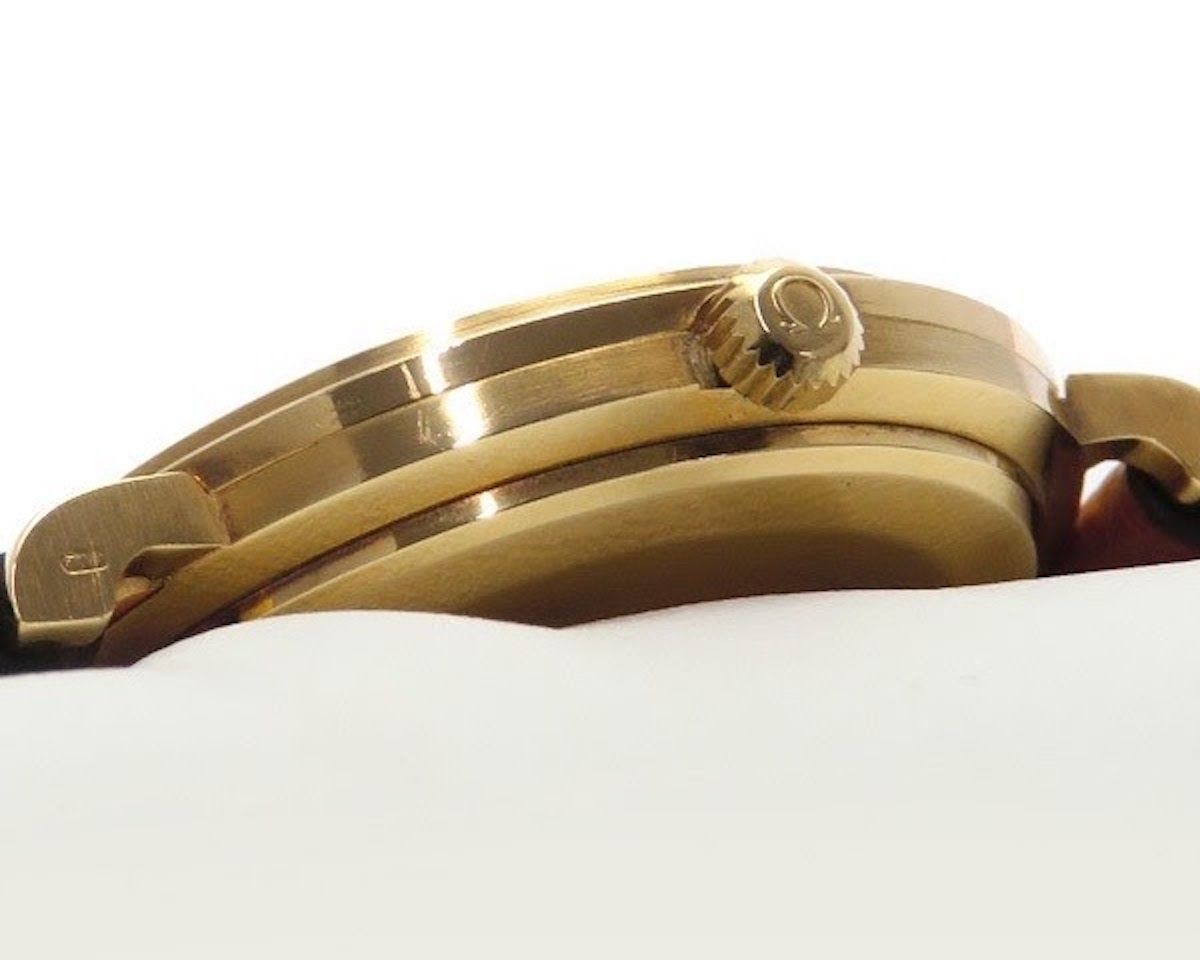
The bezel is a removable, friction-fit piece which sits in a small recess made by a cut-out in the lugs. This bezel is not simply flat, the outer edge tapers upwards before curving sharply upwards towards the crystal, creating a small rim of metal around that crystal. This entire bezel is polished to the same finish as the top face of the lugs.
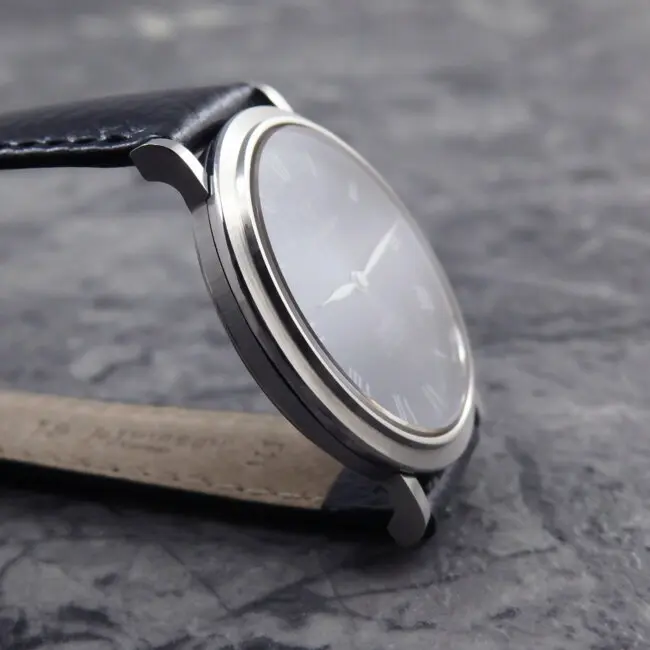
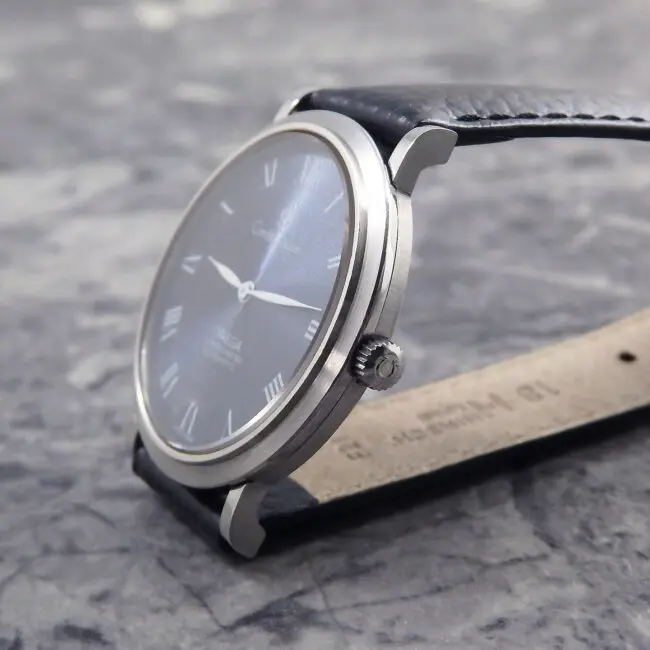
The mid-case is effectively a ring which encompasses the movement and dial, with the lugs also being a continuous part of this piece. As could be expected for a watch of this type, the mid-case is extremely thin, with the bezel sitting below the level of the lugs. The front face of the lugs are polished, while the side of the mid-case has a satin finish, contrasting with the bezel above and case-back below.
The crystal on this watch is sapphire, which is very unusual for a watch this early. As such you won't find many with scratches on the crystal, nor an Omega logo etched in the center. By using this sapphire crystal rather than an acrylic, Omega was able to make this watch even thinner than the 167.021 at an extremely impressive 7.2 mm from front to back. This thinness and the slim bezel make the 34.5 mm case wear larger than most contemporary Constellation models on the wrist.
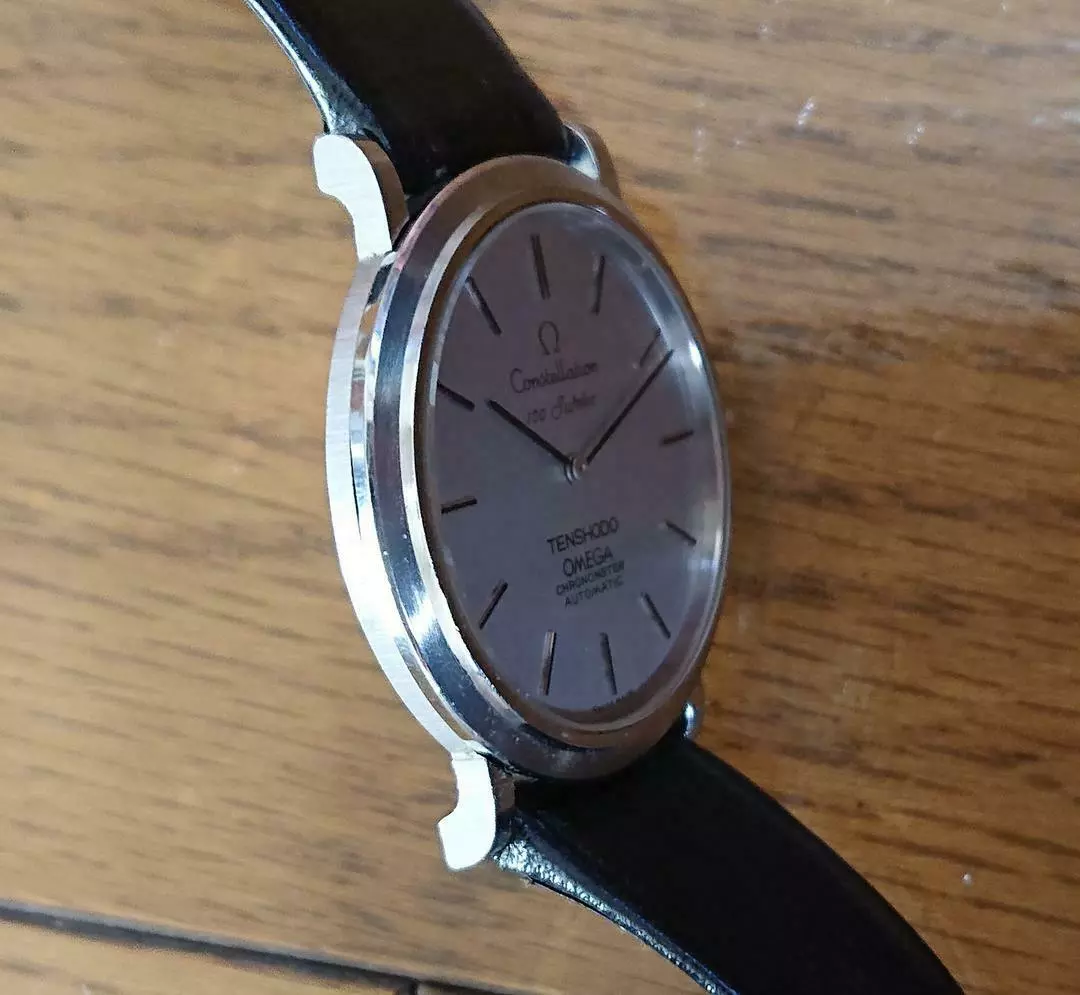
Finally, the case-back is a press-fit design, and is polished at the edge, and concentrically brushed on the back with the traditional Constellation observatory logo proudly displayed in the center. This case design offers a water resistance of 30 meters, quite reasonable for this category of ultra-thin dress watch.
The crown is a simple and small knurled design, exposed for easy access from behind and partially recessed into both the mid-case and bezel so as not to distract from the overall design.
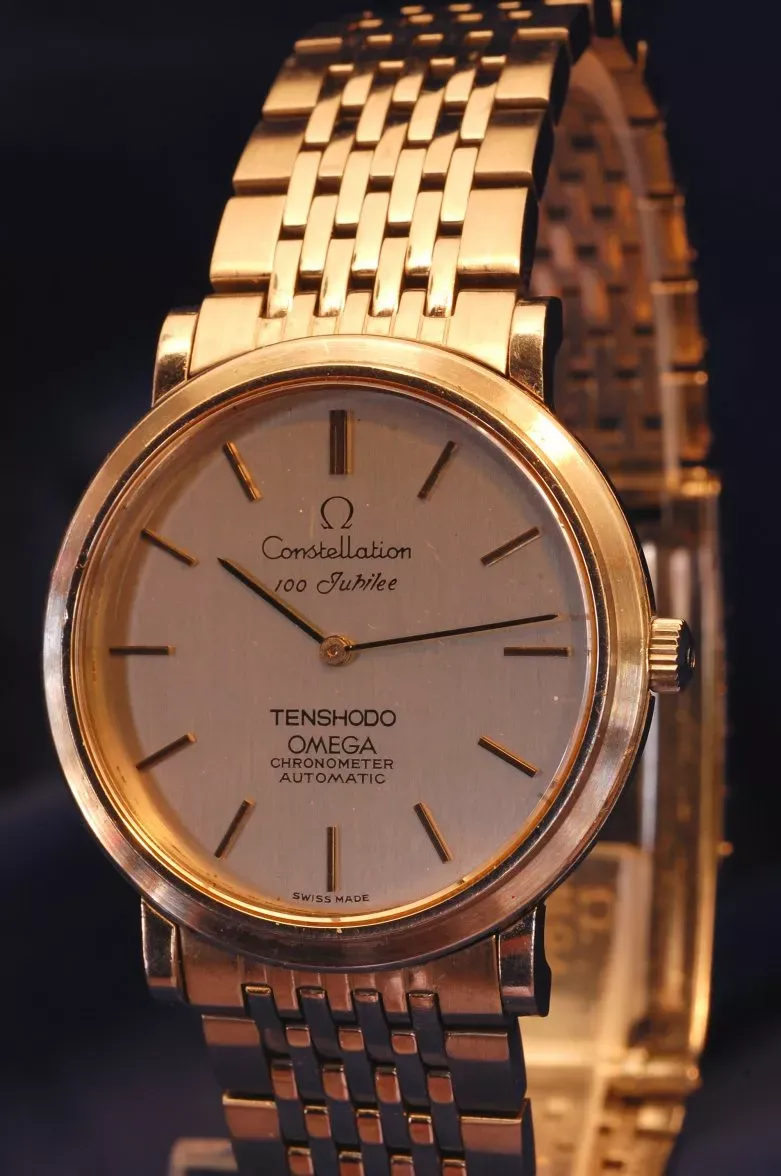
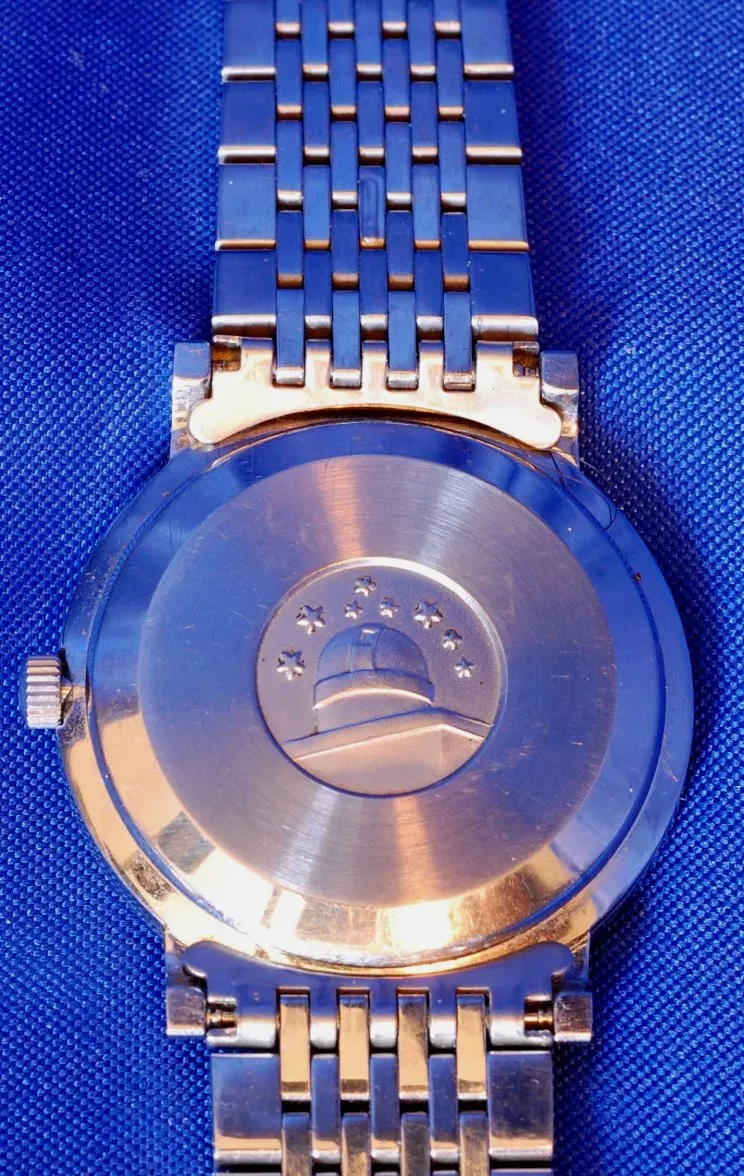
The straight lugs are 18 mm wide, fitting the same types of bracelets and straps as all other Constellation models with 18 mm lugs of the 50's, 60's & 70's. It should be noted however that the downward-hooked lugs of this case come into contact with the tabs on the underside of some end-links at a sharp angle, which may leave damage if the end-links are not modified slightly.
Movement
The ultra-thin Calibre 712 Chronometer is a very special movement for Omega.
The headline figure is the thickness which is only 3 mm. This compares to 3.6 mm in the much newer Calibre 1120 chronometer which is considered to be a very thin movement, and the 4.5 mm thick Calibre 551 which was Omega's flagship chronometer at the time. Even the famous Jaeger LeCoultre Calibre 920 is only slightly thinner at 2.45 mm.
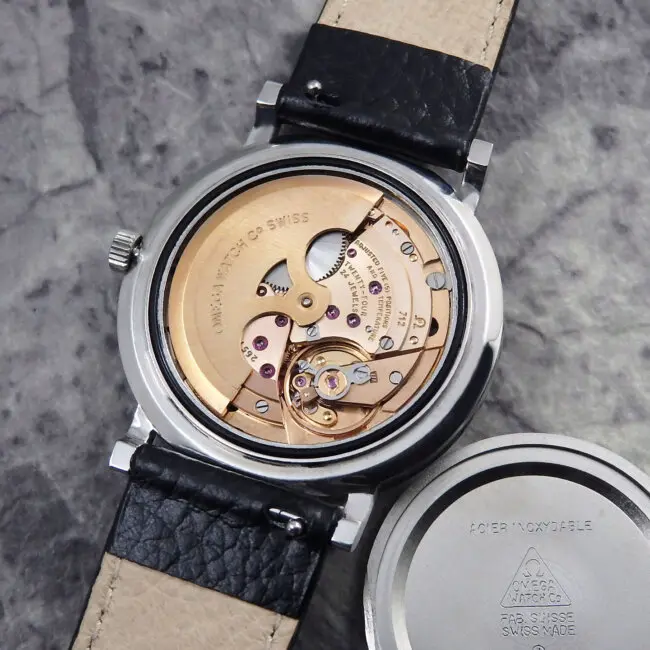
The Calibre 712 oscillates at 19,800 vph, has no date, no hacking, the option of a sweep seconds hand, and a bi-directional automatic winding system with a power reserve of 42 hours.
While the watch is quite basic in its specifications on the surface, the accuracy, slim packaging and robustness of this design led to it being used in various forms over almost three decades. From the original release in 1966 Omega kept using this movement in new and different watches, eventually resurrecting it to form the basis of piggy-back perpetual calendar and dual time models of the Louis Brandt line in the mid-1980's.
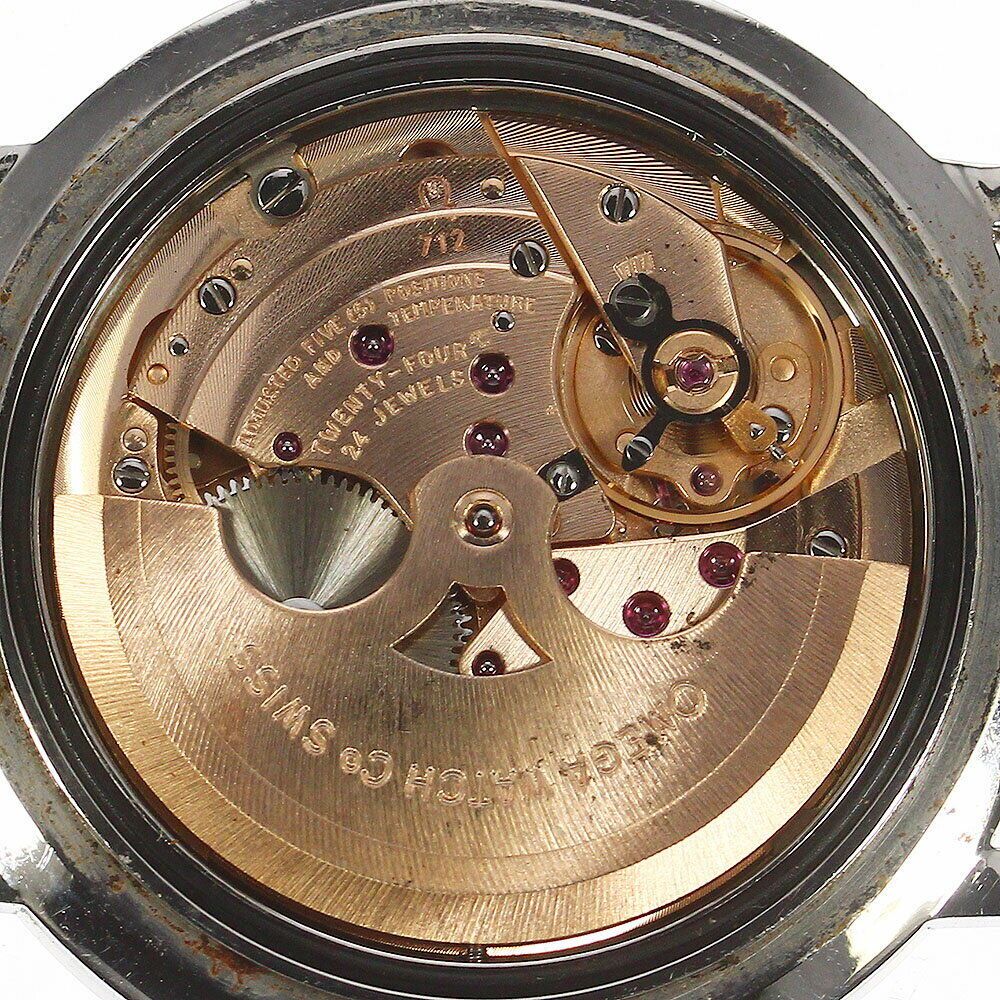
On the surface, the Cal 712 looks very similar to other Omega movements of the era due to the same color of plating and the shape of the rotor. Despite this, there is no relationship between this movement and the Calibre 5xx family of regular Omega time-only calibres. Instead, these movements were designed and produced by SSIH group stablemates Edward Piguet/Rayville SA-Montres Blancpain for exclusive use by Omega. This is a similar arrangement to the Calibre 321 Speedmaster movement and its successors which were designed and produced by Lemania for Omega, and while not in-house specifically these movements are no less important or special.
These watches should be serviced before wearing in order to prevent any metal-on-metal wear on potentially expensive vintage parts. Servicing can be handled by any Omega certified watchmaker with a parts account. After servicing these watches should be able to reach chronometer specifications again and provide many years of accurate and dependable service.
Dial & Variants
The dial of the 157.0001 shares a few elements with other ultra-thin Calibre 712 powered watches like the 167.021, particularly the painted rather than applied Omega logo.
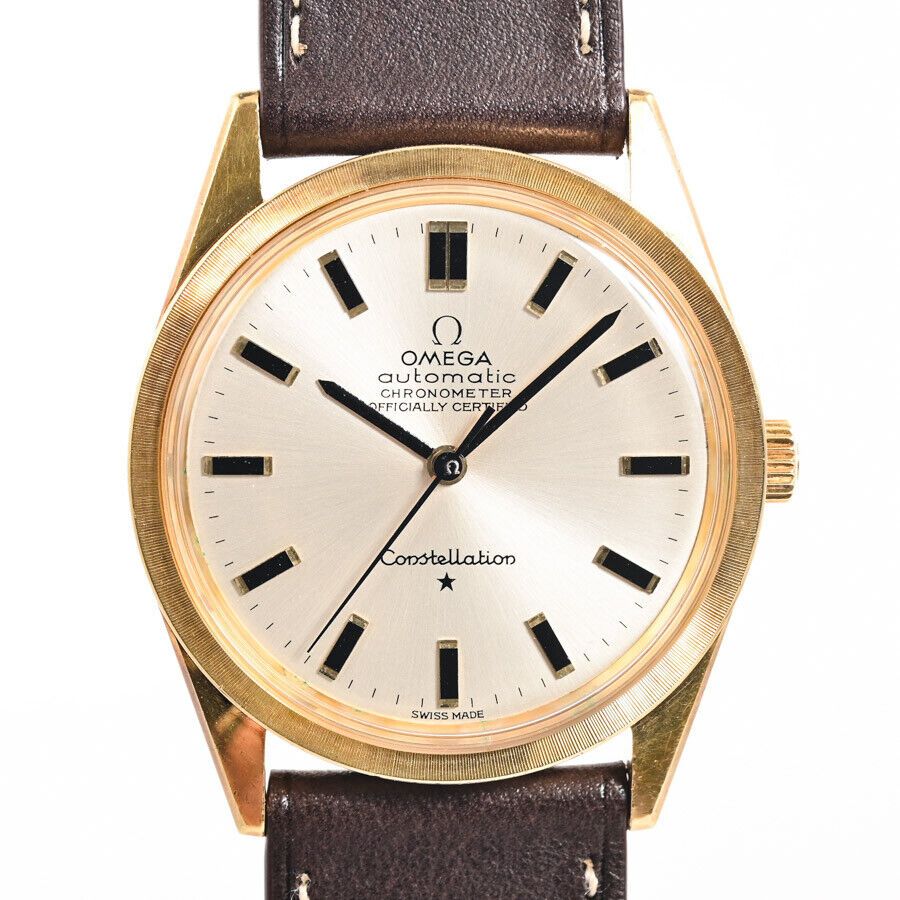
Just like those watches, the reason for the painted logo is that hour hand sits at such a low height over the dial that it would foul against any applied logo or Constellation star within its radius. The minute hand, being slightly higher is able to just clear the applied hour markers, which themselves sit at a fairly low height compared to other dials. This is not a choice made for cost saving reasons, but rather is to meet the engineering requirements of the ultra-thin movement within this watch.
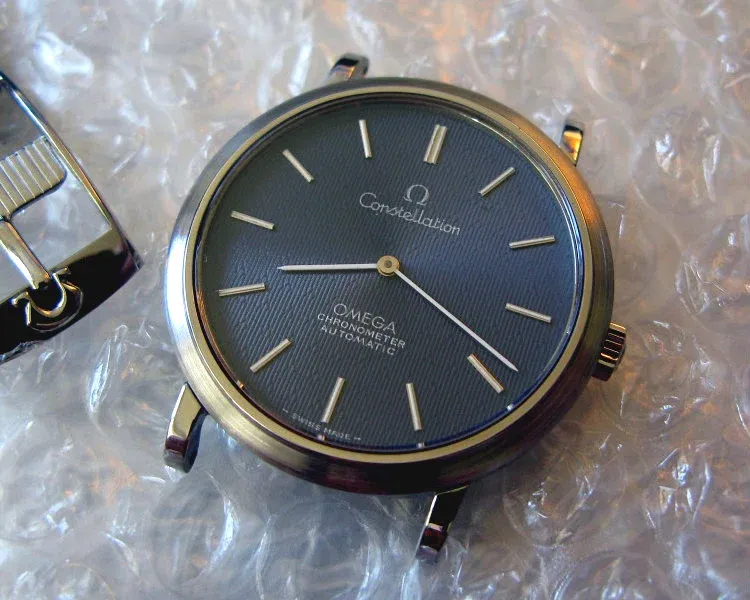
While the Calibre 712 does have a sweep second hand included in its design, Omega decided to omit this with the 157.0001, and with it remove the hash marks on the dial. This leaves a very classical, elegant and formal looking dial, which is available in a variety of highly attractive patterns.
Stainless Steel
The standard stainless steel models are the solid silver and blue dials, with the silver being by far the most common. These dials feature hands, dial text and hour marker paint in a contrasting color to the dial, black for the silver dial, and white for the blue dial.

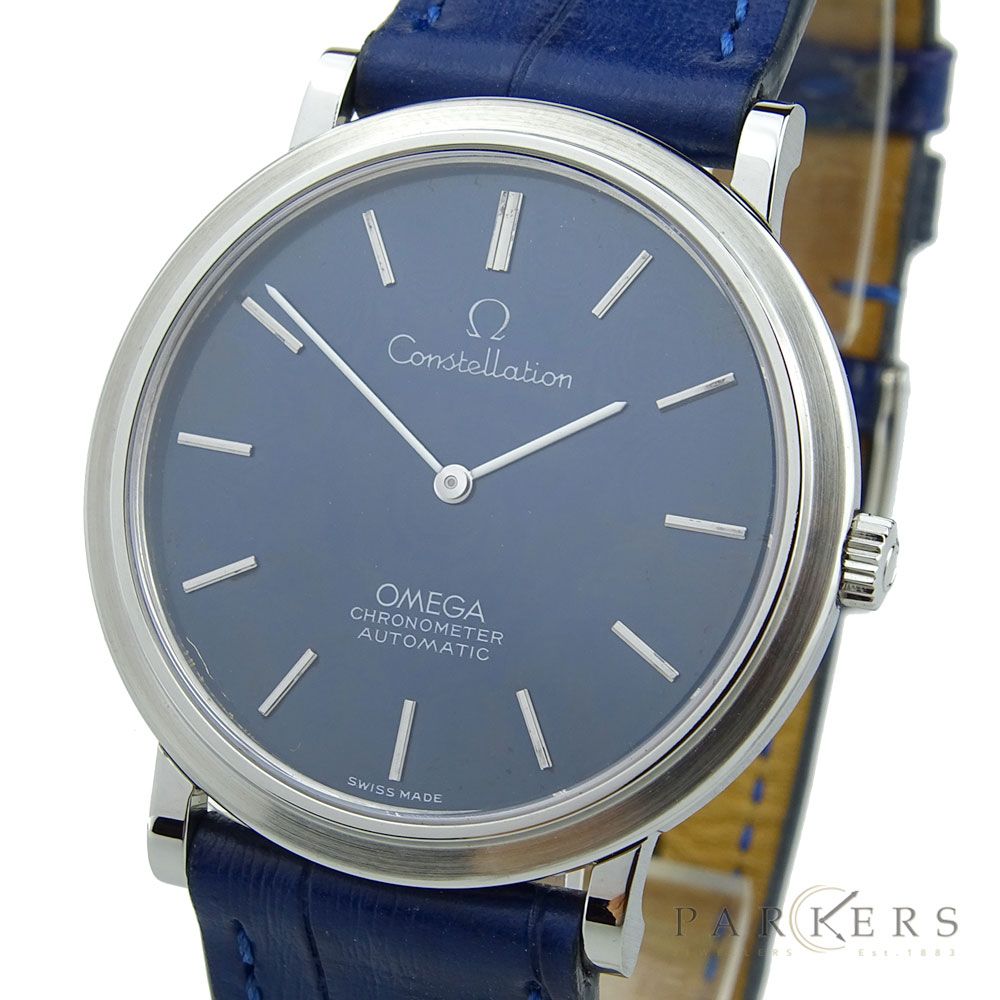
There are two textured dials available in blue for steel cases, one with the same hour markers and hands as the solid blue, and a second which has leaf hands and painted roman numerals, with the later appearing to be specific to Japan.
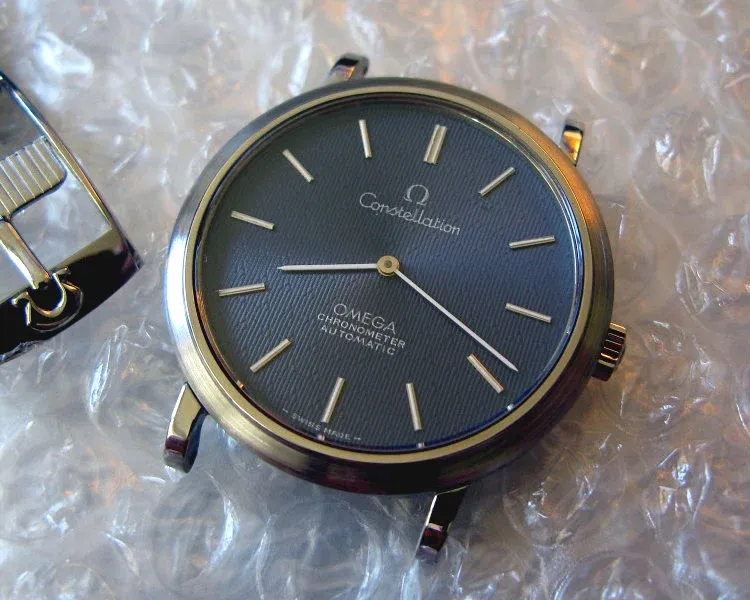
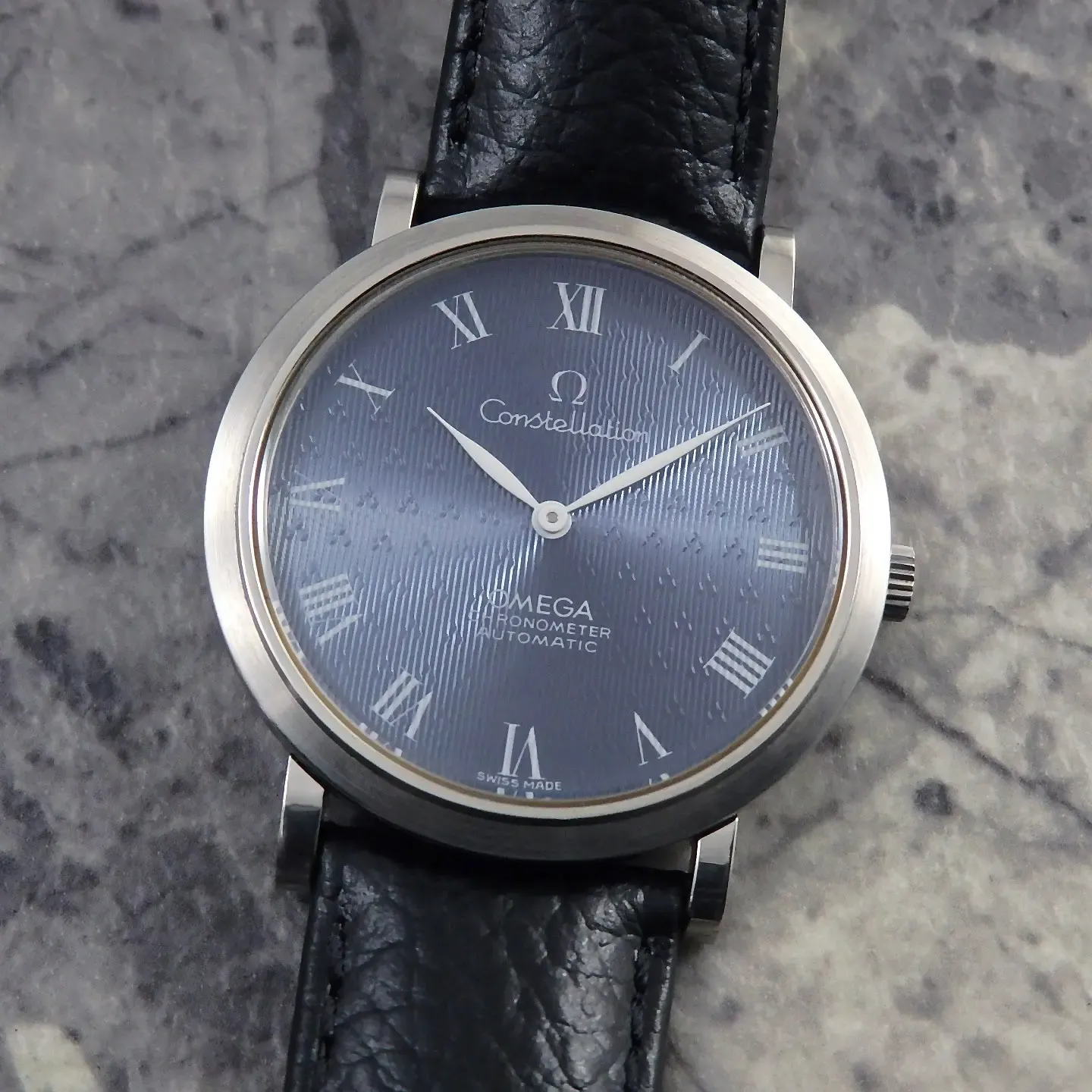
Gold-Plated & 18K Gold
The 18K Gold and gold-plated models both feature gold toned dials, with an 18K solid gold dial featuring "OM SWISS MADE OM" at the bottom of the gold dial to indicate "Or Massif" or "solid gold" in French. The gold-plated models have a similar gold-toned dial with a more prominent vertical brushed texture instead of being solid gold.
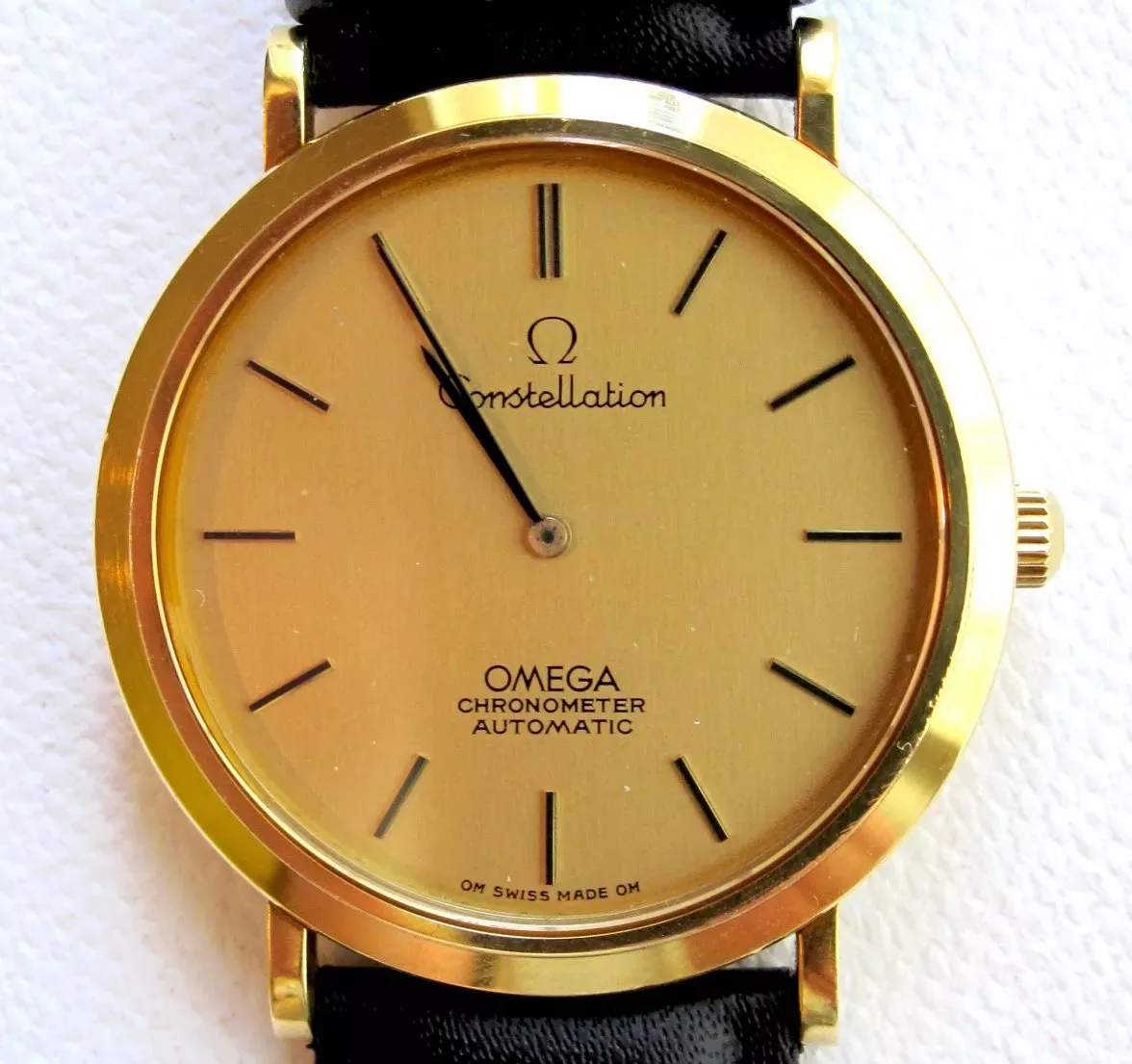

The second dial option for 18K gold is the solid gold textured dial, which features the same pattern as the blue textured dials, but has it engraved into the surface of the gold dial, giving a quite different effect. It is well worth viewing these images up close to appreciate how this dial pattern is achieved, what looks like a wallpaper up close becomes something very special from a regular viewing distance.
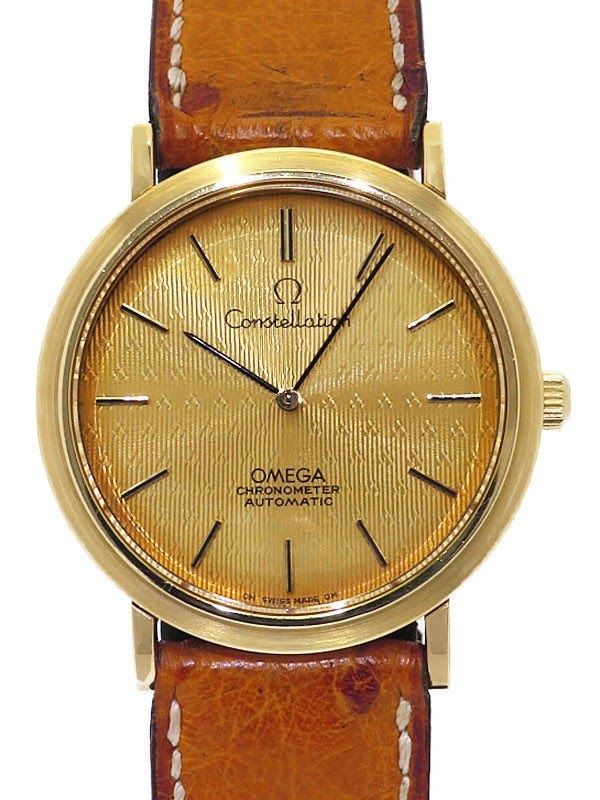
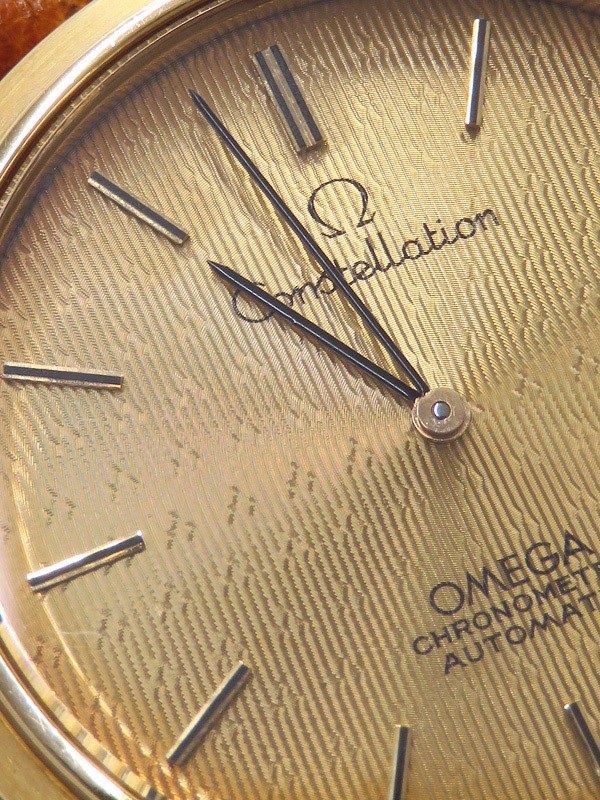
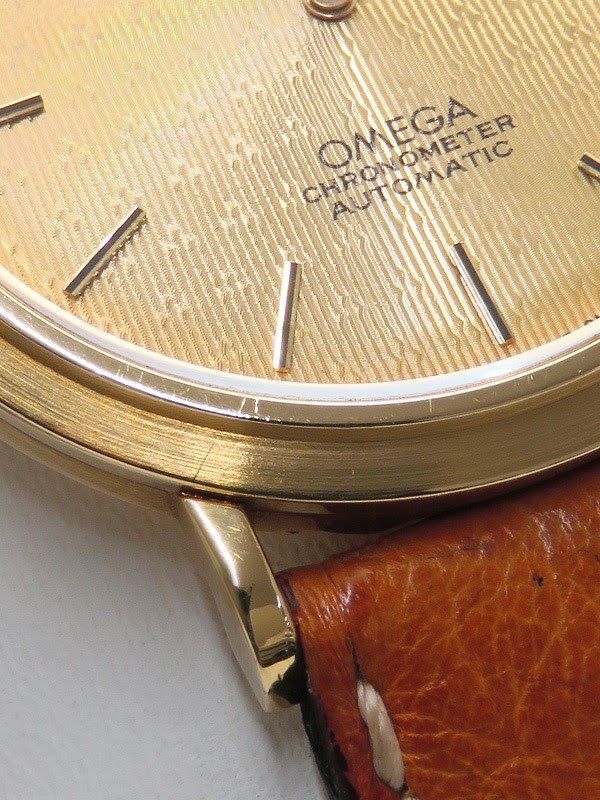
Tenshodo 100th Jubilee Edition
The Tenshodo dials feature the text "100 Jubilee" at the top, and "TENSHODO" above Omega in the lower half of the dial. The text does appear to have been added after the dial was produced, as is often the case with Turler, Meister or Tiffany dials, so it remains to be seen whether the Tenshodo special edition would appear on an extract of the archives.

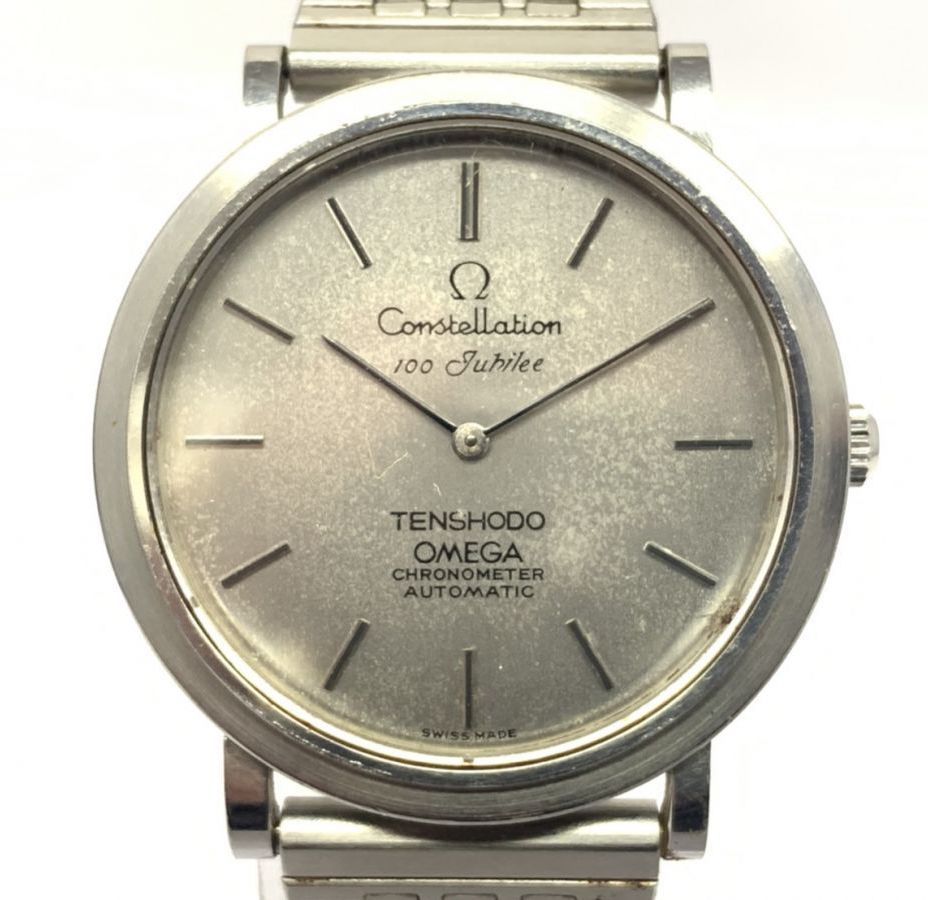
Buying
The 157.0001 Constellations have very different personalities depending on the dial and metal, but the good news is that there is a fairly even distribution of all variants except the gold-plated models which are probably best avoided anyway.
The stars in the reference are undoubtedly the textured dials which are unique, beautiful and very special, they're also not excessively rare and not overpriced if you have a little patience.
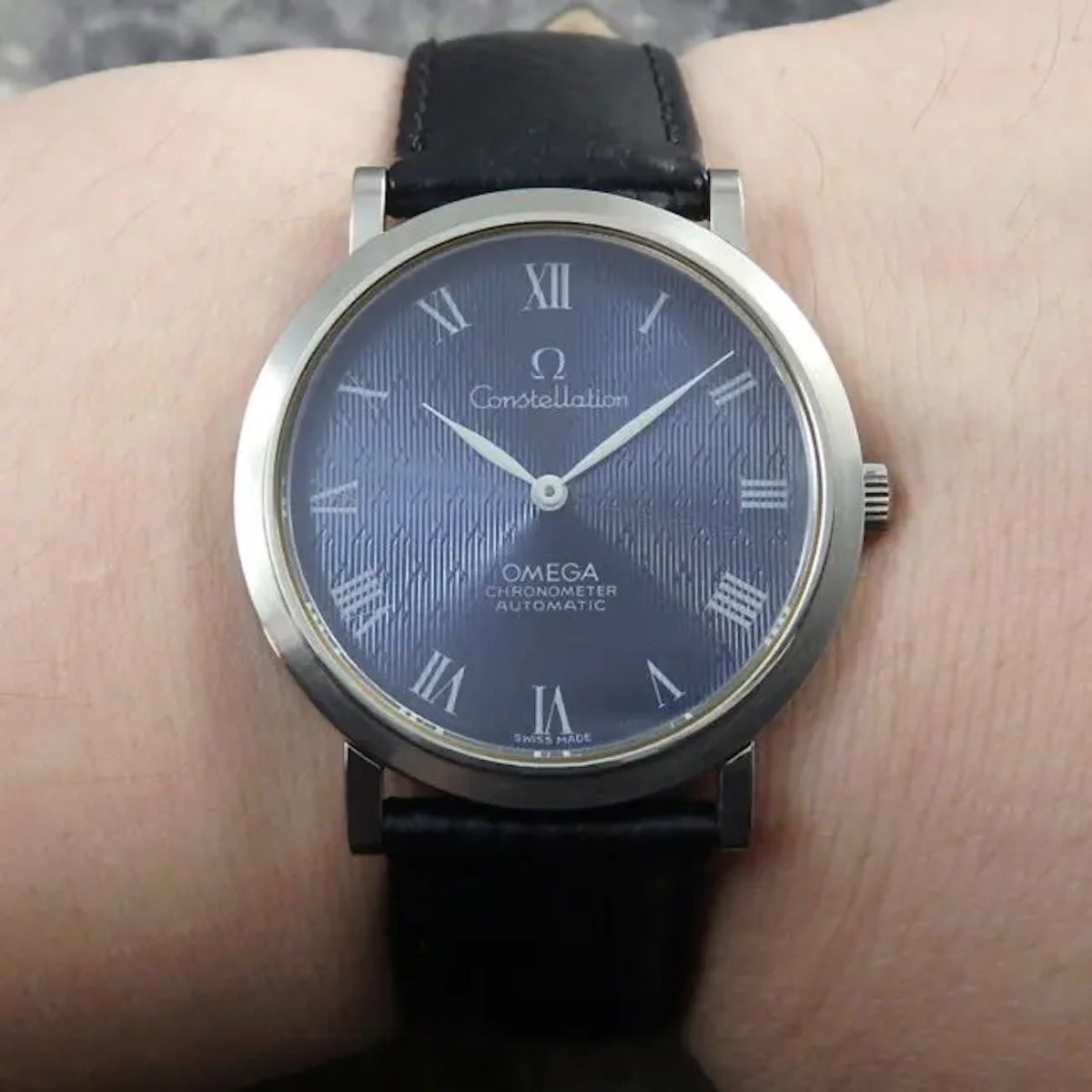
Condition wise, these watches tend to be decently water resistant, even with the press-fit case-back so dials should be clean, original and free of damage. The cases have a lot of sharp edges and complex lines which are very easily lost with polishing, so be fastidious in looking over images to find a good example. The sapphire crystal, if scratched, chipped or damaged could be a costly thing to replace so be sure to check for this. Finally, the movement should be serviced before use to avoid any metal on metal wear of potentially expensive parts, definitely get an independent watchmaker with an Omega parts account to take care of this.
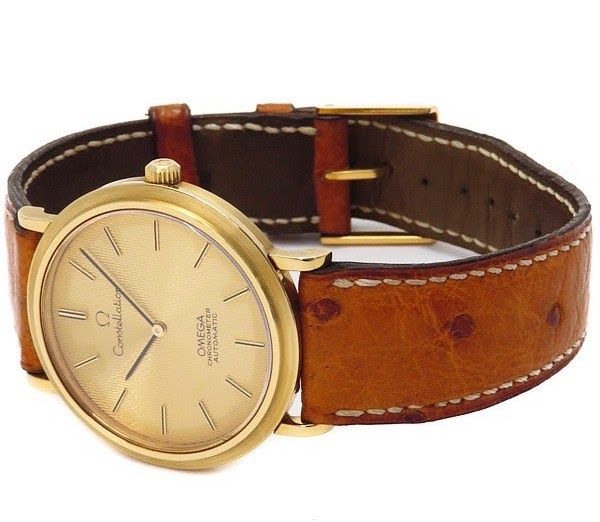
There are some decent deals to be had on these watches on the forums, or occasionally on eBay, but the vast majority of these watches in good condition can be found in Japan. You will need to have a friend to help you in Japan or a freight forwarding service as otherwise it can be difficult to get these watches outside of the country. Yahoo! Auctions Japan, and individual Japanese dealers would be the best starting point. It should also be noted that this watch is sometimes mis-labeled as 157.001 instead of 157.0001.
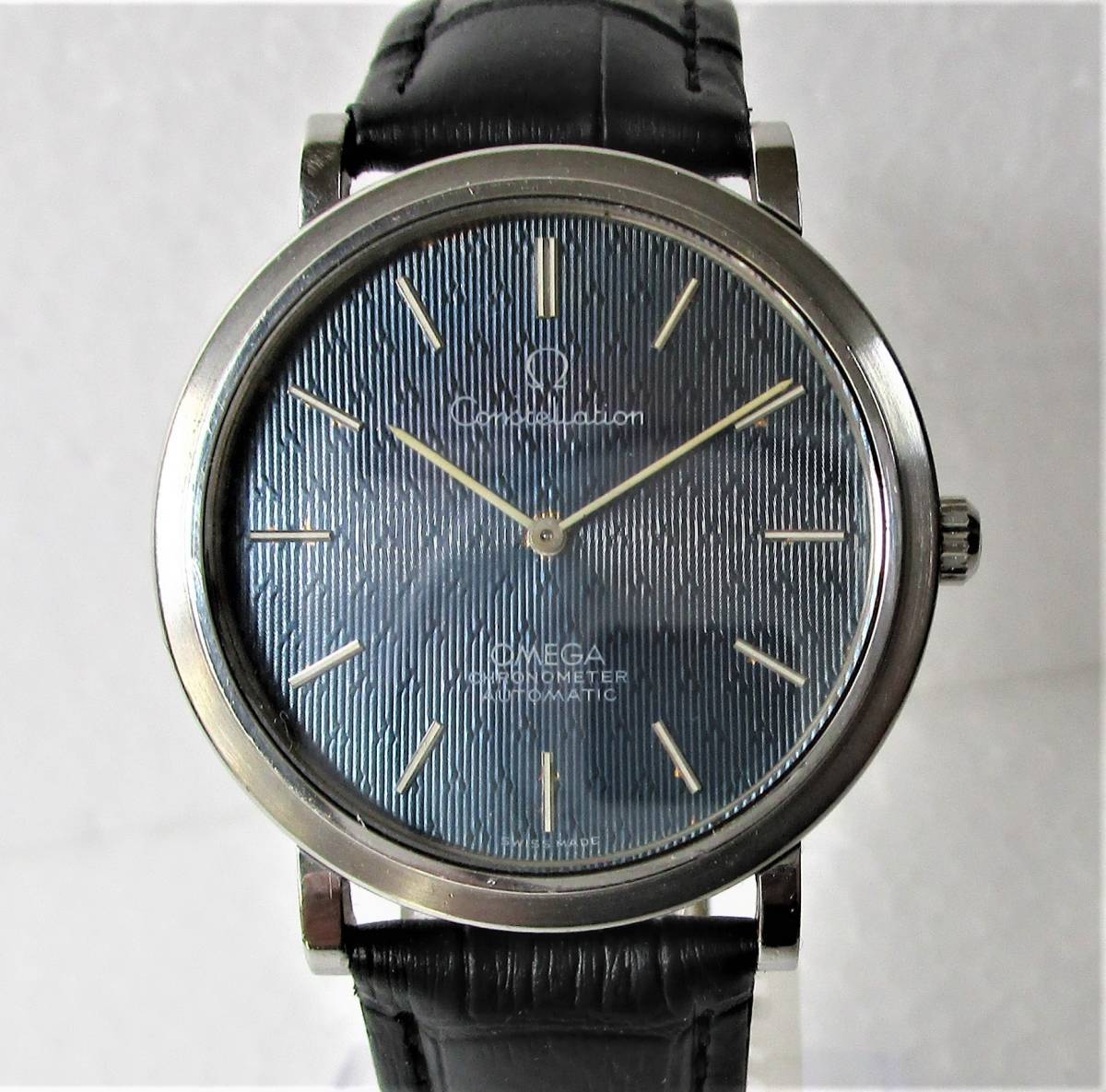
Price wise, the steel silver dials are the cheapest at around $500 with plenty of stock in good condition around that mark. Textured blue dials are significantly more expensive at around $1,500, while gold models can exceed $2,000. In all cases these are exceptionally good value watches compared to the more popular pie-pan Constellations collectors tend to be searching for.
Whether you go for the entry level silver dial, an elegant textured blue dial, or one of the stunning textured solid gold dials, these watches are beautiful, special, and extremely impressive for the price point they sit at. These are effortlessly photogenic watches, especially from side angles, which attract stares and attention, all in an ultra-thin package that fits under any shirt cuff.
Discussion thread on Omegaforums can be found here:
